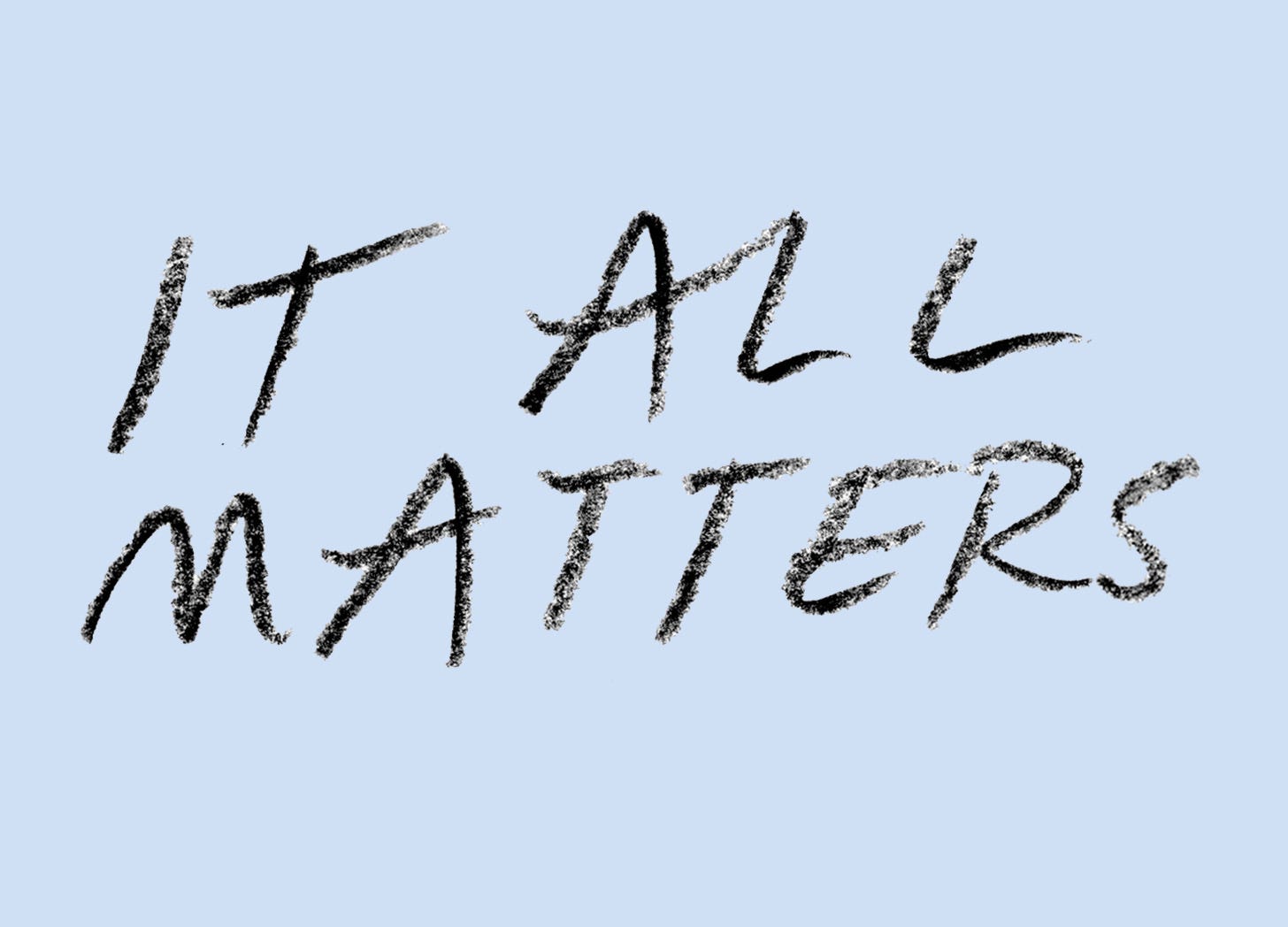creating is deciding
Caring enough to choose is the ultimate creative act—no decision is too small to help shape the final work.
After being cast as a hapless cop in Superbad, Bill Hader decided his character should wear glasses. The idea of a cop wearing glasses struck him as funny, or at least as an interesting choice.
Sharing this intention with the director, Hader soon faced an array of frames provided by the film’s costume department.
“I tried on so many glasses,” Hader recalled in an interview. Flummoxed, he turned to his movie partner, Seth Rogen, for guidance. In addition to playing Hader’s fellow cop, Rogen had co-written the film, loosely based on his high school experiences. Surely he’d have an opinion on the character’s look—he’d created the character! Yet Rogen dismissed the question scornfully: “I really don’t give a shit,” he told Hader. “You can literally wear whatever the fuck you want. It makes zero difference to me. No one cares.”
Almost two decades later, Rogen’s TV show, The Studio, would receive 23 Emmy nominations, the most for any comedy’s first season. Strikingly, one aspect of the hit show repeatedly mentioned by critics and fans would be its attention to sartorial detail. This time, Rogen, once so dismissive of the relevance of costume choices, played a substantial role.
What happened in the interim?
This may come as a surprise to those familiar with Rogen’s earlier body of work, but according to GQ, the actor and writer who built his career as a schlub in movies like Knocked Up and Pineapple Express has become “one of Hollywood’s most rakish and interesting dressers, thanks to an impressive command of color, proportions, and dress codes.”
In an interview with the New York Times, The Studio’s costumer, Kameron Lennox, gives Rogen credit for the show’s carefully curated look. When it came to what the characters would wear, Rogen believed viewers would care. These decisions mattered to the story and the way it would be interpreted.
“It was interesting when [Rogen] approached me for this project and started talking about this character,” she says. “He was very clear about how he wanted to present himself in this [suit], even about how the shoulders fit. He said, ‘It just needs to feel relaxed, I don’t want any structure, but double-breasted.’”
When Lennox pulled the right garment from the rack, Rogen said, “This is what I want it to be.”
No statement defines a fully engaged creator as thoroughly as this one: “This is what I want it to be.” Most of us create alone at a laptop. However, many, like Rogen, are tasked with steering multimillion-dollar productions involving hundreds of skilled workers and artisans while achieving a result that is consistent, coherent, and even personal. During the Hollywood era eulogized by The Studio, directors like Steven Spielberg and Martin Scorsese made films so distinctive that you can identify them in a few moments of screen time. This is true even though they worked with a vast and ever-changing cast of collaborators on each one. You know a frame of Kubrick when you see one. He wanted it to be that way, and he worked tirelessly with his collaborators to achieve that goal.
Today, creators are turning to a new, digital collaborator to turn their vision into a reality. But has the essence of creation changed? In the Renaissance, artists like Michelangelo worked with large teams of assistants to make their visions real. They weren’t always holding the brush or the chisel, but experts can still spot their work at a glance. In the end, to create isn’t to generate options. It’s to discriminate between them, all of them, in a way that shapes up into a cohesive, coherent whole. To author. Creating something is to decide: “This is what I want it to be.” Then, to lead everyone forward in that direction with an air of confidence that may be entirely artificial.
This capacity does not develop accidentally. Rogen learned to decide first by learning to care—yes, the glasses matter—and next by exercising his right to choose over and over again. It isn’t easy. Making decisions is fun at first, but quickly becomes exhausting. Laughing these concerns off and letting others sweat the details is much easier and a lot more fun. But Hader was likely the last of Rogen’s collaborators to be dismissed when raising a creative quandary. If Rogen hadn’t changed his approach, he would never have built the muscle that eventually scored all those Emmys.
By making a practice of deciding over the two decades between Superbad and The Studio, Rogen developed into a different caliber of creator, one who understands how important the details are. Every great creative work is nothing more than an accumulation of the right details. That’s what makes them great.




Another great read! I appreciate the reminder that the details matter, and creators must fight through decision fatigue. :)